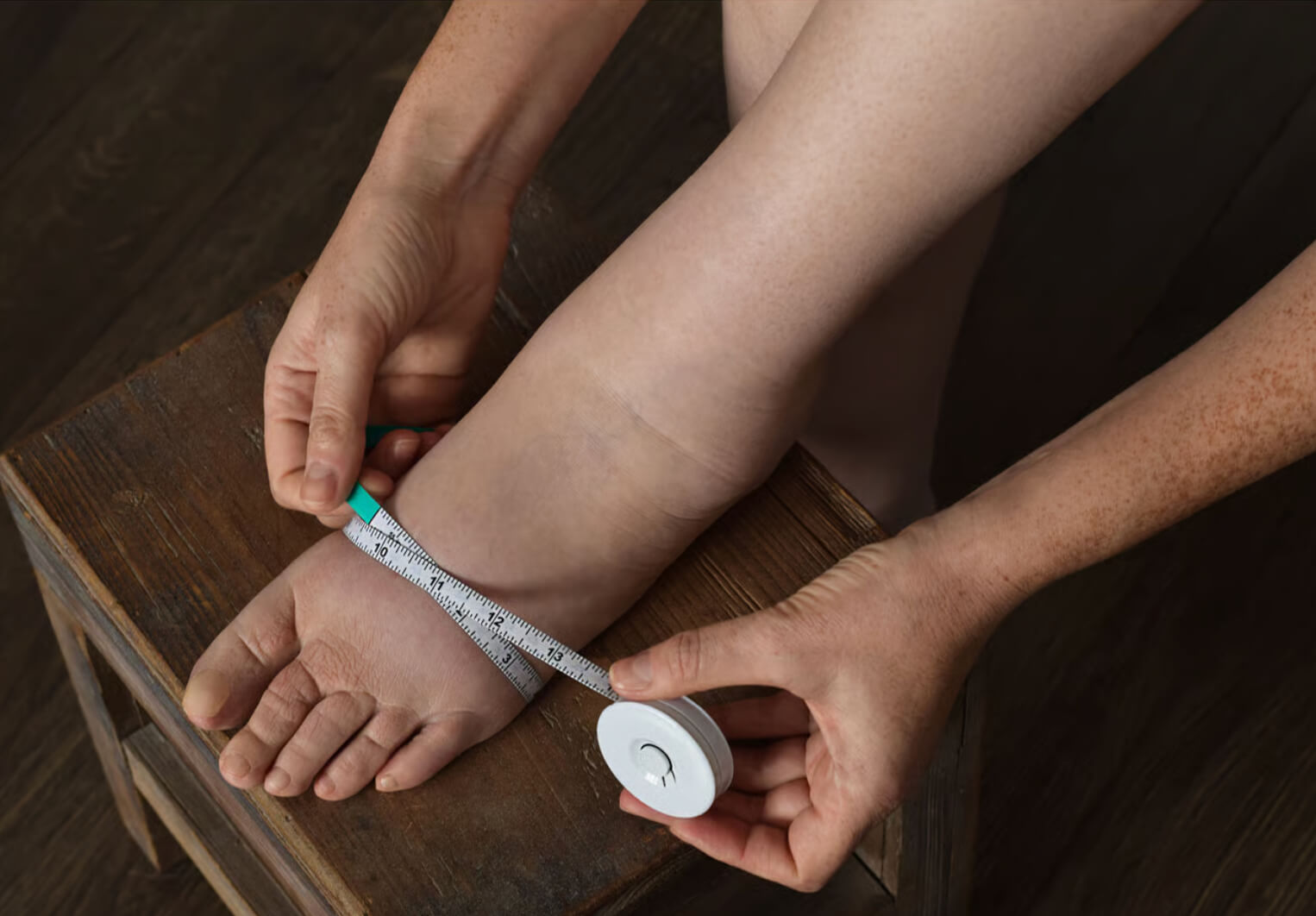When Swelling Isn't Just "Weight Gain:" What You Need to Know About Lipedema And Lymphedema
Here’s what to know about these two chronic conditions, how hormones drive them, and the latest treatment options changing care in 2025.

Despite doing everything right—eating well, staying active—your limbs still feel heavy, swollen, and nothing seems to help. But when you went to your doctor, they said it was just “aging” and to “lose weight.” You wonder: Am I losing my mind?
You’re not.
What you might have is lipedema or lymphedema, two very real conditions that affect millions of women yet remain wildly misunderstood and often undiagnosed.
After several of you reached out to inquire about these conditions (thank you for the suggestion!) I knew it was time to address this head-on. Here’s what you need to know:
First: What’s The Difference?
These are two separate medical conditions, but both cause swelling in the body. (That’s where the “-edema” comes in: It’s the medical term for fluid-related swelling.).
Lipedema is a chronic fat disorder that almost exclusively affects women. It causes painful, symmetric fat buildup, usually in the hips, thighs, and legs. The fat doesn't respond to diet or exercise and is often inflammatory and hereditary.
- Science Says: Despite up to 11% of women having some form of lipedema, it’s not uncommon for healthcare providers to misdiagnose it as obesity.
- Lymphedema, on the other hand, is caused by a malfunction in the lymphatic system, leading to fluid buildup usually in the arms or legs. It can be primary (from a congenital issue) or secondary, often following surgery, injury, or cancer treatments like lymph node removal or radiation.
And yes, women can have both.
How Lipedema and Lymphedema Impact Women Over 50
The cruel irony is just as you’re hitting your stride—kids in college, career peaked, finally some time for yourself—lipedema and lymphedema can hit your body. Hard.
While lipedema typically occurs earlier (often around puberty, pregnancy, or perimenopause), symptoms worsen once you hit menopause and estrogen levels decline.
- Here’s Why: Estrogen regulates fat storage and supports blood vessels. When estrogen levels drop, fat is more likely to accumulate, and the small blood vessels that support tissue health become more fragile. This can lead to more pain, swelling, and the progression of lipedema.
Lymphedema is typically triggered by damage to the lymphatic system, often from surgery, radiation, or infection. And as you reach your 50s, those medical interventions become more common, which means the risk of developing lymphedema rises too.
The worst part? This is the age when medical dismissal peaks, and symptoms get brushed off as “just getting older.” I’ll be the first to call that BS.
The Science: What We Now Understand
Thankfully, researchers are starting to understand what’s happening in the body, which means real hope for treatment. Recently, scientists have uncovered that:
- Lipedema fat isn’t regular fat. It’s starved of oxygen and inflamed, which explains why it hurts so much (and why dieting never worked). A 2021 study confirmed that this tissue is loaded with inflammatory markers and hypersensitive to estrogen fluctuations, so hormonal changes during menopause likely contribute to the problem (Katzer et al., 2021).
- The lymphatic system could be protected. Scientists have found VEGF-C, a protein that helps grow new lymphatic vessels. This could open doors to treatments that protect your drainage system instead of just managing symptoms.
How to Treat Lipedema and Lymphedema in 2025
Gone are the days when compression garments and elevation were all we had to offer. Today, management is multidimensional:
- Manual Lymphatic Drainage (MLD): This gentle massage remains the gold standard, but only when done by trained lymphedema therapists.
- Liposuction for lipedema: Liposuction done by surgeons trained in lipedema care can reduce pain and restore mobility, especially if caught early.
- Low-level laser therapy and pneumatic compression: These FDA-approved devices can improve lymphatic flow and reduce swelling (and it’s often covered by insurance!).
- Diet: While it won’t cure lipedema, omega-3s, low-glycemic foods, and quality protein can calm inflammation and support your lymphatic system. Some women are also finding relief with ketogenic diets, but more data is needed.
- New pharmacologic options: Trials are underway using medications that help the lymph vessels grow (like VEGF-C-based therapies).
- Psychological support: Let’s not forget the mental health toll. Being misdiagnosed for decades, watching your body change, and living with chronic pain is a heavy burden. Support groups and therapy should 100% be part of your treatment plan.
Don’t Forget: You Have Options
If you’ve noticed your legs are always swollen, aching, or you just “look bigger” despite a healthy lifestyle, you’re not losing your mind. It may be lipedema, lymphedema, or both.
Ask your doctor for a referral to a vascular medicine specialist, dermatologist, or lymphedema clinic. And don’t settle for being brushed off. As I always say: We can’t fix what we don’t name. Let’s name it. And then let’s treat it.


